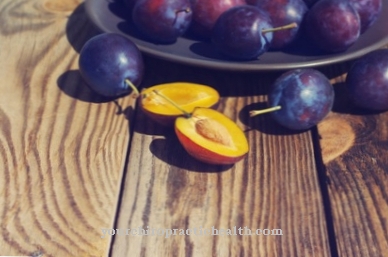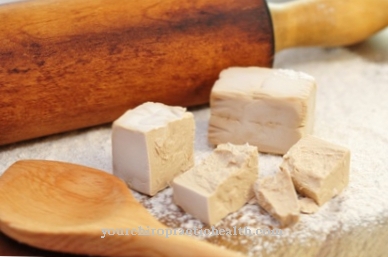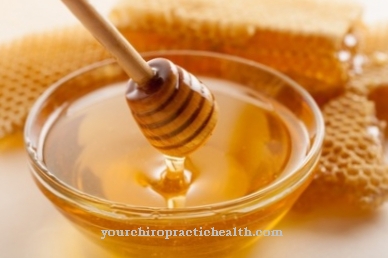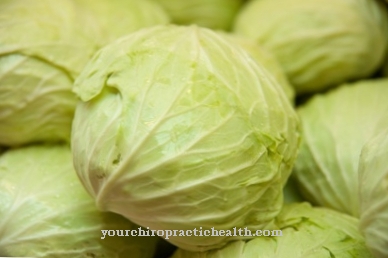rye is a relatively undemanding, hardy, temperate cereal species from the sweet grass family in terms of site conditions. The grain of rye is mainly important as food and feed, as well as being used as a renewable raw material and for the production of brandy (grain / vodka). Rye provides important amino acids and minerals, but its pollen is also highly allergenic.
What you should know about rye

Rye, which belongs to the sweet grass family, plays only a subordinate role worldwide within the grain types with 1 percent of the total amount. For Germany, rye is of far greater importance as a raw material for food and animal feed, as a renewable raw material and for the production of high-proof spirits.
With an annual production of around 4.7 million tons, Germany is the world's largest producer - ahead of Russia and Poland, which each harvest 3.4 million tons. Little is known about the cultivation of rye in prehistoric times. Finds in northern Syria (Tell Abu Hureya) show that rye was grown and used as food 8,600 years ago. Finds in Central Europe have shown that rye has been present at least since the Hallstatt period in the 6th to 5th centuries BC. Was known. The only economic relevance is winter rye, which is sown in autumn and survives winter as a young plant and has a clear growth advantage over summer cereals in spring when the growing season begins.
In Central and Eastern Europe, rye is often used in its ground state as flour for making rye or mixed bread and other baked goods. Rye is rich in primary and secondary plant substances. The pleasant and mild taste of the grain and the high content of minerals, especially potassium and phosphorus, are particularly valued. As a supplier of a number of important and in some cases essential amino acids, rye also contributes to the basic supply of the body. Vitamins of the B complex and vitamin E.
Bread and baked goods made from rye flour require what is known as sourdough to be produced because rye flour also contains gluten, but cannot build up a gluten structure like wheat flour, for example. With rye flour, this framework and gas holding function is performed by pentosans, which lead to the rye baked goods becoming quite firm and either through the sourdough flow or by adding wheat flour to it.
Importance to health
Measured by its primary and rich secondary ingredients, rye can certainly fulfill the function of a staple food. The total nutritional and calorific value of 293 kilocalories per 100 grams of edible portion of rye is mainly based on the high proportion of carbohydrates in a significant amount of proteins.
Fats and oils are only weakly represented at 1.7 grams. It is above all the high proportion of essential amino acids such as lysine, methionine, tryptophan, histidine and others that make rye a valuable food that also strengthens the immune system. With a proportion of 13.2 grams of fiber, rye supports digestion and stimulates the unconscious movement of the intestine, the peristalsis. Many of the vitamins, enzymes, and minerals that rye grains contain are in the aleurone layer just below the peel.
In order to enjoy the full “range” of ingredients, the whole grain (whole grain products) should be used in the case of baked goods, or flours with a high degree of grinding with a type designation above 1,000 (e.g. type 1050). Despite all the positive properties associated with the consumption of rye, there is also a downer, because like wheat, rye also contains gluten and rye pollen is considered to be highly allergenic. Far fewer people react to rye flour than to pollen. However, a rye flour allergy occurs in bakers who constantly have to deal with rye flour at work.
Ingredients & nutritional values
| Nutritional information | Amount per 100 gram |
| Calories 338 | Fat content 1.6 g |
| cholesterol 0 mg | sodium 2 mg |
| potassium 510 mg | carbohydrates 76 g |
| protein 10 g | Fiber 15 g |
Rye grains shine with a balanced portfolio of ingredients including phytochemicals that are important for the metabolism and the immune system. The nutritional and calorific value of 338 kilocalories per 100 grams is based on 76 grams of carbohydrates and 10 grams of high quality protein. Only the fat or oil content of the rye falls a little behind at 1.7 grams.
In terms of the high mineral content, potassium with 510 milligrams and magnesium 90 milligrams and calcium are particularly important. The high levels of B vitamins and vitamin E are also positive. For example, vitamins B3 (nicotinic acid) are represented with 1,800 µg, B5 (pantothenic acid) with 1,500 µg and vitamin E with 2,000 µg. Other important ingredients are around 11 different amino acids such as tryptophan, lysine, histidine and a few others, most of which are even essential.
Intolerances & allergies
Rye flour and rye products, like wheat flour, contain gluten, so people with a gluten intolerance or gluten intolerance or people who suffer from celiac disease should avoid rye products. A direct rye flour allergy that is not based on problems with gluten is very rare. Rye flour allergies are known among bakers who process rye flour and are exposed to rye flour dust every day.
Nevertheless, rye is not without problems with regard to allergens, since its pollen has the highest allergen potential of all known grasses. The allergen potential is several times higher than that of wild grasses. In very rare cases, allergy sufferers experience cross-reactions between rye pollen and rye flour.
Shopping & kitchen tips
Basically, rye is available in the form of grains, semolina, flakes or flour, whereby rye flour is available in differently high and quantified degrees of grinding. Numbers over 1,000 indicate a high proportion of the aleurone layer and the peel, which contain valuable amino acids and minerals.
If a high quality standard without residues of pesticides and without pushing through large amounts of nitrogen and other artificial fertilizers is desired, various monitored organic standards can be used in the cultivation of rye. One of the highest standards is represented by Demeter quality. Rye flour can be stored for several years, provided that it is dry (less than 14 percent) and sealed airtight so that no further oxygen can lead to deterioration in quality through oxidation.
Another way to benefit from the advantages of rye grain is to consume bread or other baked goods made from whole rye or rye flour. Baked products that are made 100 percent from rye should be treated with a so-called sourdough process before baking, which in principle replaces the gluten in wheat. If this does not happen, the dough will be very firm and barely edible.
Preparation tips
Rye grains, rye meal and rye flour can in principle be baked without restrictions. However, rye flours are darker than wheat flours and are rarely used for baking cakes. Rye flour is very suitable for baking bread and rolls. The slightly sour taste of baked goods made from rye is due to the use of sourdough. It is necessary because rye flour needs an acidic environment in order to keep the fermentation gases of the yeast in the dough, otherwise the baked goods would become inedible hard.









.jpg)



.jpg)



.jpg)







.jpg)


